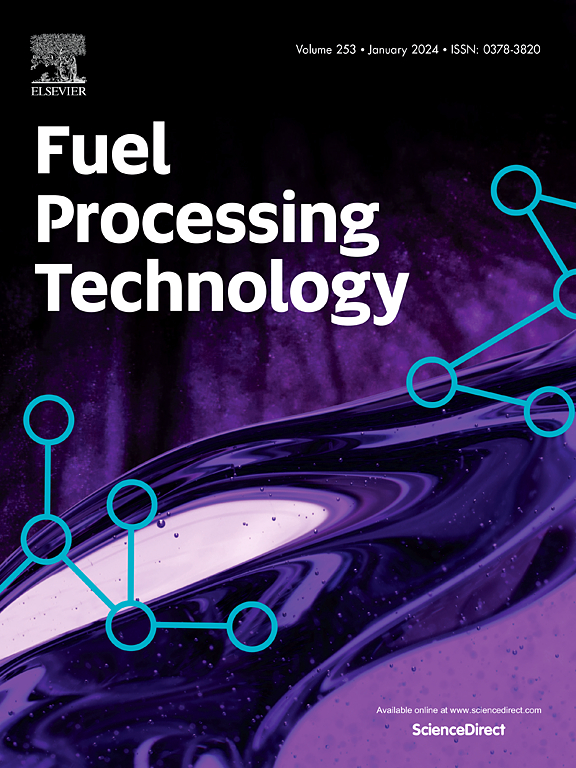Bio-carbon composite for supercapacitor electrodes: Harnessing hydrochar frameworks and bio-tar polymerization
IF 7.2
2区 工程技术
Q1 CHEMISTRY, APPLIED
引用次数: 0
Abstract
Bio-tar, a promising renewable carbon precursor, has garnered significant attention for its potential in supercapacitor electrode applications. However, the polymerization of bio-tar into carbon presents challenges, particularly in achieving a dense, interconnected pore structure essential for optimal electrochemical performance. This study introduced an innovative approach using hydrochar as a framework combined with bio-tar as the carbon source to synthesize bio-carbon composite. The results showed that the prepared bio-carbon exhibited a stable morphological structure in which the hydrochar skeleton supported the wrapping of bio-tar originated carbon, specifically at a hydrochar to bio-tar ratio of 1:6. And it also showed a maximum specific surface area of 2714.27 m2/g, with a mesopore ratio of 68.79 % at an activation temperature of 800 °C. The optimal electrochemical properties were observed at the highest specific capacitance of 340.4 F/g in a three-electrode system under a current density of 0.5 A/g. When assembled into a supercapacitor, the single-pole specific capacitance reached 213.3 F/g at 0.5 A/g. The structure-property relationship suggested that the water contact angle is a key factor influencing the specific capacitance, particularly at high specific surface areas. This study demonstrated an innovative way to prepare sustainable composite bio-carbon material with excellent electrochemical performance.

用于超级电容器电极的生物碳复合材料:利用碳氢化合物框架和生物焦油聚合
生物焦油是一种很有前途的可再生碳前驱体,因其在超级电容器电极中的应用潜力而受到广泛关注。然而,将生物焦油聚合成碳带来了挑战,特别是在实现最佳电化学性能所必需的致密、相互连接的孔结构方面。本研究提出了一种以烃类为骨架,以生物焦油为碳源合成生物炭复合材料的创新方法。结果表明,制备的生物炭具有稳定的形态结构,烃类骨架支撑着生物焦油源碳的包裹,特别是在烃类与生物焦油比为1:6时。在活化温度为800℃时,其最大比表面积为2714.27 m2/g,中孔率为68.79%。在电流密度为0.5 a /g的三电极体系中,最高比电容为340.4 F/g时,电化学性能最佳。当组装成超级电容器时,单极比电容在0.5 a /g时达到213.3 F/g。结构-性能关系表明,水接触角是影响比电容的关键因素,特别是在高比表面积下。本研究展示了一种制备具有优异电化学性能的可持续复合生物碳材料的创新方法。
本文章由计算机程序翻译,如有差异,请以英文原文为准。
求助全文
约1分钟内获得全文
求助全文
来源期刊

Fuel Processing Technology
工程技术-工程:化工
CiteScore
13.20
自引率
9.30%
发文量
398
审稿时长
26 days
期刊介绍:
Fuel Processing Technology (FPT) deals with the scientific and technological aspects of converting fossil and renewable resources to clean fuels, value-added chemicals, fuel-related advanced carbon materials and by-products. In addition to the traditional non-nuclear fossil fuels, biomass and wastes, papers on the integration of renewables such as solar and wind energy and energy storage into the fuel processing processes, as well as papers on the production and conversion of non-carbon-containing fuels such as hydrogen and ammonia, are also welcome. While chemical conversion is emphasized, papers on advanced physical conversion processes are also considered for publication in FPT. Papers on the fundamental aspects of fuel structure and properties will also be considered.
 求助内容:
求助内容: 应助结果提醒方式:
应助结果提醒方式:


